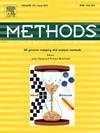新型多靶点LAMP和PCR检测博德氏菌
IF 4.3
3区 生物学
Q1 BIOCHEMICAL RESEARCH METHODS
引用次数: 0
摘要
百日咳,或称百日咳,是一种由几种博德泰拉菌引起的高度传染性疾病,并继续构成重大的全球公共卫生问题。百日咳发病率的上升突出表明,迫切需要制定有效的公共卫生战略,以应对博德特拉菌感染。快速和针对特定物种的诊断工具对于预防博德特拉菌传播至关重要,也是抗感染措施的重要组成部分。本研究旨在建立一种新的环介导等温扩增(LAMP)和定量PCR (qPCR)方法,用于检测导致人类呼吸道感染的4种博德tella:百日咳B.、副百日咳B.、支气管杆菌B.和霍尔默氏B.。qPCR检测显示出低检测限(LoD),每次反应可可靠地识别多达5个拷贝的目标DNA。LAMP测定比qPCR(30分钟)快大约3倍,但具有更高的lod。值得注意的是,qLAMP对所有4种博德泰拉菌每次反应的检出限为25个拷贝。相比之下,vLAMP对百日咳和副百日咳的LoD为25拷贝/次;霍氏芽孢杆菌和支气管芽孢杆菌每个反应的LoD为50个拷贝。我们使用呼吸道感染患者的鼻拭子样本验证了检测方法,用qPCR分析了651份样本,用LAMP分析了145份样本。两种检测方法均与常见的病毒性和细菌性呼吸道病原体无交叉反应性。qPCR与LAMP的符合率为94.5%,表明两种方法在临床应用中具有较高的可靠性。这些发现表明,开发的qPCR和LAMP检测方法可以成功地应用于博德特拉菌感染的检测和管理。本文章由计算机程序翻译,如有差异,请以英文原文为准。
Novel multitarget LAMP and PCR assays for the detection of Bordetella species
Whooping cough, or pertussis, is a highly contagious disease caused by several Bordetella species and continues to pose a significant global public health concern. The rising incidence of pertussis highlights the urgent need for effective public health strategies to address Bordetella infections. Rapid and species-specific diagnostic tools are essential for preventing Bordetella transmission and are vital components of anti-infective measures. This study aimed to develop novel loop-mediated isothermal amplification (LAMP) and quantitative PCR (qPCR) assays for the detection of four Bordetella species responsible for human respiratory tract infections: B. pertussis, B. parapertussis, B. bronchiseptica, and B. holmesii. The qPCR assay demonstrated a low limit of detection (LoD), reliably identifying up to 5 copies of target DNA per reaction. The LAMP assays were approximately three times faster than qPCR (30 min) but had higher LoDs. Notably, qLAMP had a limit of detection of 25 copies per reaction for all four Bordetella species. In contrast, vLAMP had a LoD of 25 copies per reaction for B. pertussis and B. parapertussis; and a LoD of 50 copies per reaction for B. holmesii and B. bronchiseptica. We validated the assays using nasal swab samples from patients with respiratory tract infections, analyzing a total of 651 samples with qPCR and 145 samples with LAMP. Both assays exhibited no cross-reactivity with common viral and bacterial respiratory pathogens. The concordance rate between qPCR and LAMP was 94.5%, underscoring the reliability of both methods for clinical application. These findings suggest that the developed qPCR and LAMP tests can be successfully integrated into clinical practice for the detection and management of Bordetella infections.
求助全文
通过发布文献求助,成功后即可免费获取论文全文。
去求助
来源期刊

Methods
生物-生化研究方法
CiteScore
9.80
自引率
2.10%
发文量
222
审稿时长
11.3 weeks
期刊介绍:
Methods focuses on rapidly developing techniques in the experimental biological and medical sciences.
Each topical issue, organized by a guest editor who is an expert in the area covered, consists solely of invited quality articles by specialist authors, many of them reviews. Issues are devoted to specific technical approaches with emphasis on clear detailed descriptions of protocols that allow them to be reproduced easily. The background information provided enables researchers to understand the principles underlying the methods; other helpful sections include comparisons of alternative methods giving the advantages and disadvantages of particular methods, guidance on avoiding potential pitfalls, and suggestions for troubleshooting.
 求助内容:
求助内容: 应助结果提醒方式:
应助结果提醒方式:


